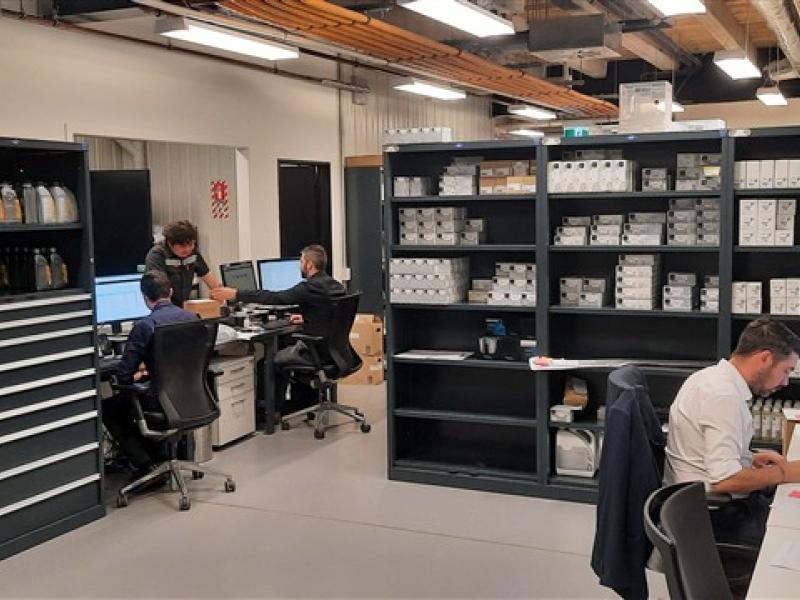A common complaint from the automotive trades is that there isn’t enough new blood coming in. You’ve built or bought your business and now you want to spend more time relaxing, playing with the toys, doing the successful business owner thing, yes?
Then along comes a global pandemic and you have to lay off staff, which means you personally have to get back on the tools again.
You went into business for yourself to ultimately get out of it right? So how come you’re still working? And to make matters worse, there’s no new blood to do the donkey work, to go in search of left-handed spanners, to hang around suppliers for a long weight/wait, or to go fetch a bubble for the spirit level.
You might as well have stayed apprenticed to some grumpy old tradesperson! Instead, you’re becoming one, when you should be out fishing, hunting, or being nagged to finish those repairs around the house.
Actually, with that last one, being at work’s not SO bad…
Well, with the Gummint’s recent Budget announcement, you might have the opportunity to dust off that fishing rod, oil up the shotgun and go find some curtain rails with the missus, because there’s good news on the apprentice front.
Experience with the aftermath of the 07-09 Global Financial Crisis showed the surprising fact that when the economy suffers, tertiary education gets a shot in the arm, as jobs are lost, and people seek new opportunities.
Covid-19 is a comparable crisis, but we learned some lessons from the GFC, and this year’s Budget saw the honourable Chris Hipkins – Minister of Education – able to announce some good news.
It started with the announcement of a $1.6 billion fund package to facilitate the biggest change in education to happen in 25 years.
At the core of this is the formal commencement of the Reform of Vocational Education (RoVE) which in turn, opened the doors to the formation of the New Zealand Institute of Skills and Technology (NZIST), an organisation whose name you need to remember from this point on.
NZIST is the umbrella organisation which has enveloped the 16 existing Institutes of Technology and Polytechnics (ITPs) so it can provide a more cohesive and robust vocational training foundation.
NZIST does not however, operate in isolation. As part of the reform, Workforce Development Councils (WDC’s) will work with transitional Industry Training Organisations, other providers and NZIST to provide advice and guidance to inform tertiary education system responses to Covid-19 impacts.
Show me the Money
The 1.6 billion dollars – or at least, a fair decent whack of it – is being spent on what Minister for Education Hipkins has called the Trades and Apprenticeships Training Package.
This TATP is broken down into a variety of components, but Motor Equipment News readers should be focused on the two big ones:
• $320 million targeted investment support for free trades training in critical industries.
• $412 million support for employers to retain and keep training their apprentices.
The first of these is the figure you want if you know of someone who wants to become an apprentice, but moans that he/she can’t afford it.
The $320 million – collectively called the ‘Targeted Training and Apprenticeship Fund’ – is designed to remove financial barriers to improving skillsets in specific industries to help the country get back on its economic feet.
Any apprenticeship on the Tertiary Education Commission (TEC) website qualifies under the scheme, and to save you from scrolling through the weirder qualifications – and there are some doozies in there – the words to look for are ‘Automotive Engineering’ – the catch-all for anything automotive.
Anyone can apply for free funding to undertake apprenticeship training from July 1 2020 until 31 December 2022.
Funding applies to all ages (thus anyone who lost their long-standing job through Covid-19 cutbacks can apply for training in a new field), school leavers can also apply and if you are already an apprentice, you also can apply for funding support.
The fund covers course fees, compulsory course costs, and compulsory student services – all you need to go back to school, except your lunch money.
The second is the figure employers are going to like. The ‘Apprenticeship Boost’ – announced June 17 – is the employer-friendly component of the Trades and Apprenticeships Training Package.
This is a $380.6 million dollar helping hand for employers to supplement the wages paid to the apprentice. It can translate to $16,000 per apprentice.
The funding, covering 20 months of an apprenticeship, provides businesses with a financial incentive to help recruit and retain apprentices while New Zealand is responding to the impacts of Covid-19.
Apprenticeship Boost, the Targeted Training and Apprenticeship Fund, as well as traineeship programmes in selected industries, reinforces the Minister’s tertiary education reform mandate.
What becomes of what we knew?
As far as employers who have embraced on-the-job training and enjoyed the support of industry training institution MITO up to this point, the question you might be asking is: where does MITO go?
It hasn’t gone anywhere; in fact, in the immediate short term, it’s business as usual according to CEO Janet Lane.
“All ITOs became transitional industry training organisations on 1 April as part of the Government’s Reform of Vocational Education. Nothing changes with respect to the mandate and operation of each ITO. It does enable the enactment of legislation to commence the implementation of the Reform of Vocational Education.”
Going forward, MITO will transfer the qualification and standard-setting functions to the Manufacturing, Engineering, Logistics and Technology Workforce Development Council, mandated to occur by 30 June 2021; and transfer of the arranging training function to the provider network by 31 December 2022.
All transitions will take place seamlessly, with MITO working with industry every step of the way.
MITO supports apprenticeship and traineeship training programmes across the automotive, transport and logistics and extractives industries.
It undertakes initiatives to build the pipeline of talent to industry, including the StartUp secondary school micro-credential for Year 11-13 students and various marketing campaigns and initiatives aligned to the MITO Job Hub.
There are currently over 800 jobseekers looking for a career in the automotive industry. Automotive employers can view these jobseekers and make direct contact.
MITO’s training programmes are mostly delivered through eLearning and practical assessment in the workplace. eLearning allows MITO apprentices to complete their theory work anywhere at any time.
Combined with the support of their MITO Industry Training Advisor, the apprentice and employer are guided every step of the way.
Janet Lane wholeheartedly applauds the funding initiatives, stating that the Government is showing leadership and significant goodwill to businesses that take on apprentices.
“Apprenticeship Boost is another substantial Budget 2020 initiative that recognises the contribution and commitment that employers dedicate to training their workforces through on-the-job training.
“Having ‘Apprenticeship Boost’ alongside the ‘Targeted Training and Apprenticeship Fund’ to financially support businesses who train apprentices is unprecedented, and significant to New Zealand’s post Covid-19 recovery,” says Ms Lane.
We couldn’t find any apprentices able to take the time to talk to us on this topic – most repair shops are going gangbusters right now playing catch up – with apprentices’ time better spent on the end of a hammer, wrench or spray gun anyway.
We did speak to Jason – who owns Redwood Panel and Paint in West Auckland – to get his take on the funding initiatives and apprenticeships in general.
Jason’s worked with a few apprentices over time and has in fact, just seen his most recent fledgling leave the nest.
“I like the idea of on-the-job training,” he says. “But it can be challenging for a busy shop, watching over apprentices, making sure they’re doing what they need to be doing and making sure their assignments are being done in accordance with the requirements of their training.
“To be fair, the work that MITO does to support shops and the apprentices is very good, but sometimes the whole exercise becomes almost too hard when you’re trying to remain competitive in a cutthroat industry.”
Jason has done well with his apprentices in the past, though he was concerned that the panel industry especially, did not seeing enough new blood coming through and when it happened, it was a bit of a financial burden on his business.
Both ‘Apprentice Boost’ and the ‘Targeted Training and Apprenticeship Fund’ initiatives then, have been well conceived and rolled out at just the right time.
The last words should probably come from the source of all this good news:
“We are making a significant paradigm shift from seeing learning as a system or institution
that learners need to fit their lives around, to seeing learning as something that needs to flex and fit around each person and the lives they live,” Chris Hipkins said.






